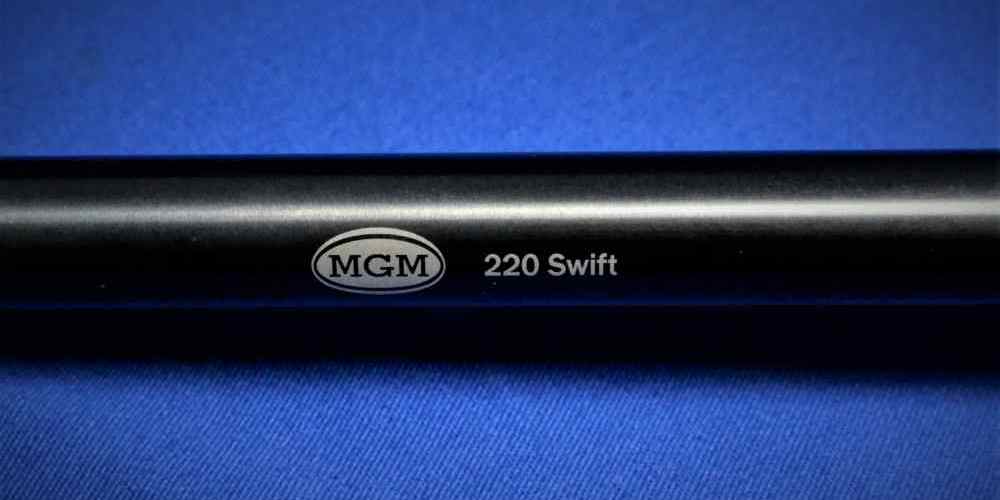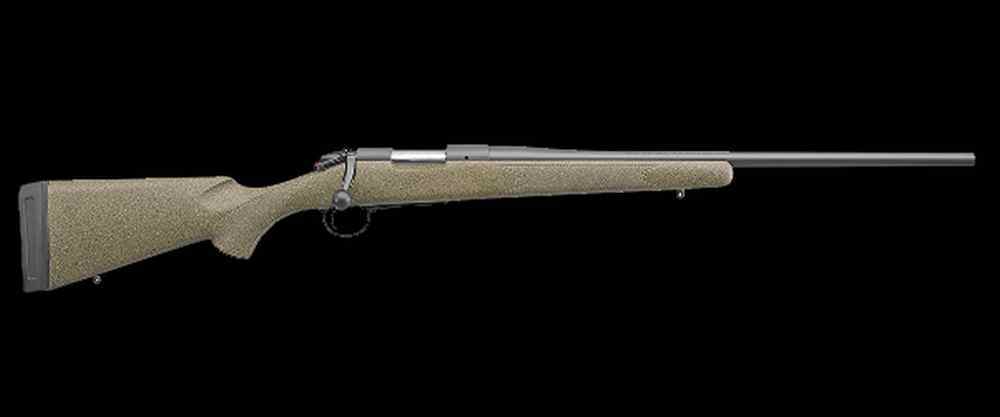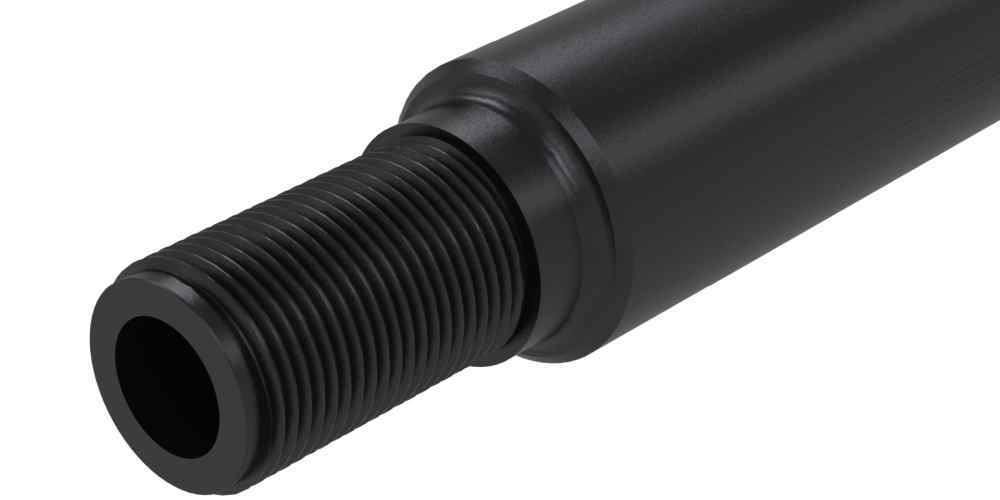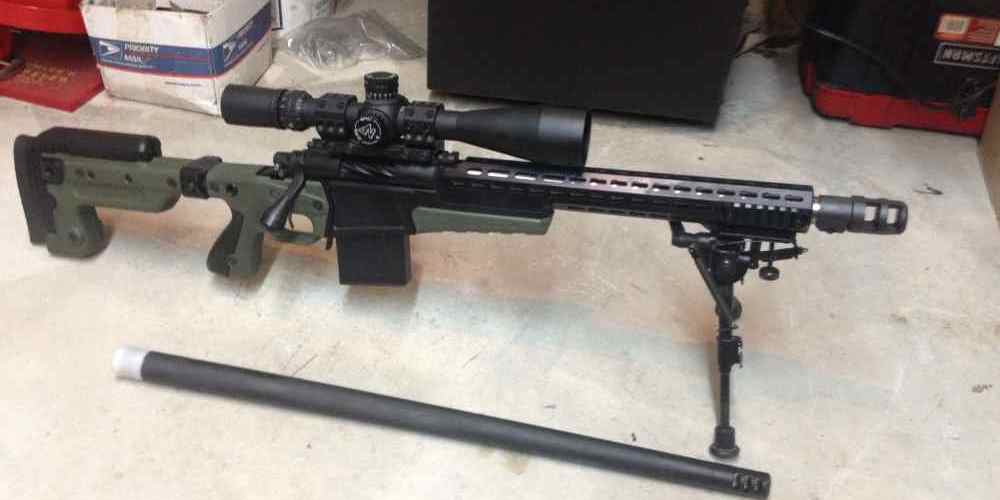“Precision performance at any altitude: Choose the right rifle barrel for high-altitude shooting.”
Benefits of Lightweight Barrel Materials
When it comes to high-altitude shooting, selecting the right rifle barrel is crucial for achieving optimal performance. One key factor to consider is the weight of the barrel, as this can have a significant impact on accuracy and overall shooting experience. In high-altitude conditions, where the air is thinner and the environment is more challenging, having a lightweight barrel can offer several benefits that can enhance your shooting experience.
One of the main benefits of using a lightweight barrel for high-altitude shooting is improved maneuverability. A lighter barrel can make your rifle easier to handle and carry, especially when trekking through rugged terrain at high altitudes. This can be particularly advantageous for hunters or shooters who need to move quickly and quietly in order to get into position for a shot. With a lightweight barrel, you can navigate through challenging terrain more easily, allowing you to focus on your target without being weighed down by a heavy rifle.
In addition to improved maneuverability, a lightweight barrel can also help reduce shooter fatigue. When shooting at high altitudes, where the air is thinner and physical exertion can be more taxing, having a lighter rifle can make a significant difference in your overall comfort and endurance. By reducing the weight of your rifle, you can minimize strain on your arms and shoulders, allowing you to maintain better control and accuracy over extended shooting sessions. This can be especially beneficial for competitive shooters or hunters who may need to take multiple shots in quick succession.
Another advantage of using a lightweight barrel for high-altitude shooting is improved accuracy. A lighter barrel can help reduce barrel whip and vibration, which can affect the consistency and precision of your shots. By choosing a barrel made from lightweight materials such as carbon fiber or titanium, you can minimize these unwanted effects and achieve more consistent shot placement. This can be particularly important when shooting at long distances or in challenging conditions where every shot counts.
Furthermore, lightweight barrel materials are often more durable and resistant to environmental factors such as moisture and corrosion. This can be especially important when shooting in high-altitude environments, where the weather can be unpredictable and harsh. By selecting a barrel made from a lightweight and durable material, you can ensure that your rifle will perform reliably and consistently, even in challenging conditions. This can give you peace of mind knowing that your equipment is up to the task, no matter where your shooting adventures take you.
In conclusion, selecting a lightweight barrel for high-altitude shooting can offer several benefits that can enhance your shooting experience. From improved maneuverability and reduced shooter fatigue to enhanced accuracy and durability, a lightweight barrel can make a significant difference in your overall performance and enjoyment. By choosing a barrel made from lightweight materials such as carbon fiber or titanium, you can optimize your rifle for high-altitude conditions and achieve the best possible results. So next time you’re gearing up for a high-altitude shooting adventure, consider the benefits of a lightweight barrel and see how it can take your shooting to new heights.
Importance of Barrel Length for High-Altitude Shooting
When it comes to high-altitude shooting, selecting the right rifle barrel is crucial for achieving optimal performance. One of the key factors to consider when choosing a rifle barrel for high-altitude shooting is the barrel length. The length of the barrel can have a significant impact on the accuracy and velocity of your shots, especially at higher altitudes where air density is lower.
A longer barrel typically results in higher muzzle velocity, which can be beneficial when shooting at long distances or in windy conditions. The increased velocity can help compensate for the reduced air density at high altitudes, allowing your bullets to maintain their trajectory and hit the target with greater precision. Additionally, a longer barrel can also provide better stability and control, making it easier to maintain accuracy when shooting in challenging conditions.

On the other hand, a shorter barrel may be more maneuverable and easier to handle, especially in tight spaces or when shooting from a prone position. However, shorter barrels generally produce lower muzzle velocity, which can lead to decreased accuracy and performance at high altitudes. It’s important to strike a balance between barrel length and performance to ensure that you can effectively engage targets at various distances and under different shooting conditions.
When selecting a rifle barrel for high-altitude shooting, it’s essential to consider the specific requirements of your shooting environment and the type of shooting you plan to do. If you anticipate shooting at long distances or in windy conditions, a longer barrel may be the best choice to maximize velocity and accuracy. Conversely, if you need a more compact and maneuverable rifle for close-range shooting, a shorter barrel may be more suitable for your needs.
In addition to barrel length, other factors such as barrel material, rifling twist rate, and muzzle device can also impact the performance of your rifle at high altitudes. It’s important to carefully evaluate these factors and choose a barrel that is well-suited to your shooting style and preferences. Consulting with experienced shooters or firearms experts can also provide valuable insights and recommendations to help you make an informed decision.
Ultimately, selecting the right rifle barrel for high-altitude shooting is a critical step in optimizing your shooting performance and achieving consistent accuracy and precision. By carefully considering factors such as barrel length, material, and other key features, you can ensure that your rifle is well-equipped to handle the challenges of shooting at high altitudes. Whether you’re a seasoned marksman or a novice shooter, investing in a quality rifle barrel that meets your specific needs and preferences can make a significant difference in your shooting experience and overall success on the range.
Considerations for Twist Rate in Thin Air
When it comes to high-altitude shooting, there are a number of factors to consider in order to achieve optimal performance. One crucial element to take into account is the selection of the rifle barrel, specifically the twist rate. The twist rate of a barrel refers to the rate at which the rifling inside the barrel twists, imparting spin to the bullet as it travels down the barrel. This spin stabilizes the bullet in flight, improving accuracy and consistency.
In high-altitude shooting conditions, the air is thinner and less dense than at lower elevations. This can have a significant impact on the performance of a rifle barrel, particularly when it comes to the twist rate. In thin air, bullets experience less resistance as they travel down the barrel, which can affect the way they stabilize and fly once they leave the muzzle.
When selecting a rifle barrel for high-altitude shooting conditions, it is important to consider the twist rate that will best suit the specific environment. In general, a faster twist rate is recommended for shooting at higher altitudes. This is because the reduced air density can cause bullets to destabilize more easily, leading to decreased accuracy and consistency.
A faster twist rate will impart more spin to the bullet, helping to stabilize it more effectively in thin air. This can result in improved accuracy and consistency, making it easier to hit targets at long distances. However, it is important to strike a balance with the twist rate, as too fast of a twist rate can lead to excessive spin and potentially cause the bullet to destabilize.
In addition to the twist rate, the length of the barrel can also play a role in high-altitude shooting conditions. Longer barrels can help to increase muzzle velocity, which can be beneficial when shooting at higher elevations where the air is thinner. This increased velocity can help to compensate for the reduced air density, allowing the bullet to maintain its trajectory more effectively.
It is also important to consider the type of ammunition being used when selecting a rifle barrel for high-altitude shooting. Different types of bullets may perform better with different twist rates, so it is important to test a variety of ammunition to determine which works best in a specific environment.
Overall, selecting a rifle barrel for high-altitude shooting conditions requires careful consideration of the twist rate, barrel length, and ammunition being used. By choosing a barrel with a faster twist rate and appropriate length, shooters can improve their accuracy and consistency when shooting at higher elevations. Testing different combinations of twist rates and ammunition can help to determine the best setup for optimal performance in thin air.
Best Caliber Options for High-Altitude Shooting
When it comes to high-altitude shooting, selecting the right rifle barrel is crucial for achieving optimal performance. The thin air and lower oxygen levels at higher elevations can have a significant impact on bullet trajectory and velocity. In order to compensate for these factors, it is important to choose a rifle barrel that is well-suited for high-altitude shooting conditions.
One of the key considerations when selecting a rifle barrel for high-altitude shooting is the caliber of the rifle. The caliber of a rifle refers to the diameter of the bore and the size of the bullet that it fires. Different calibers have different ballistic characteristics, and some are better suited for high-altitude shooting than others.
One of the best caliber options for high-altitude shooting is the .300 Winchester Magnum. This caliber is known for its long-range accuracy and high velocity, making it ideal for shooting at extended distances. The .300 Winchester Magnum is also capable of delivering a high level of energy to the target, making it a popular choice among hunters and long-range shooters.
Another excellent caliber option for high-altitude shooting is the 6.5 Creedmoor. This caliber has gained popularity in recent years for its excellent long-range performance and low recoil. The 6.5 Creedmoor is known for its high ballistic coefficient, which helps it maintain velocity and energy over long distances. This makes it a great choice for shooting in high-altitude environments where bullet drop and wind drift can be significant factors.
For those looking for a more traditional caliber option, the .308 Winchester is a solid choice for high-altitude shooting. The .308 Winchester is a versatile caliber that is capable of delivering consistent accuracy and performance at long ranges. While it may not have the same long-range capabilities as the .300 Winchester Magnum or the 6.5 Creedmoor, the .308 Winchester is still a reliable option for shooting in high-altitude conditions.
In addition to caliber, it is also important to consider the length and twist rate of the rifle barrel when selecting a rifle for high-altitude shooting. Longer barrels can help increase muzzle velocity and improve accuracy, while a faster twist rate can stabilize heavier bullets and improve long-range performance.
Ultimately, the best caliber option for high-altitude shooting will depend on your specific shooting needs and preferences. It is important to consider factors such as bullet trajectory, velocity, and energy when selecting a rifle barrel for high-altitude shooting. By choosing a caliber that is well-suited for high-altitude conditions, you can ensure that you are able to achieve optimal performance and accuracy when shooting at extended distances.
In conclusion, selecting a rifle barrel for high-altitude shooting requires careful consideration of factors such as caliber, barrel length, and twist rate. By choosing a caliber that is well-suited for high-altitude conditions, you can ensure that you are able to achieve optimal performance and accuracy when shooting at extended distances. Whether you prefer the long-range capabilities of the .300 Winchester Magnum, the low recoil of the 6.5 Creedmoor, or the versatility of the .308 Winchester, there are a variety of caliber options available for high-altitude shooting. Choose the caliber that best suits your shooting needs and enjoy improved performance in high-altitude environments.
How to Properly Maintain a Rifle Barrel in Extreme Conditions
When it comes to high-altitude shooting, selecting the right rifle barrel is crucial for achieving optimal performance. The extreme conditions at high altitudes can have a significant impact on the accuracy and overall effectiveness of your rifle. In order to ensure that your rifle is performing at its best, it is important to properly maintain the barrel in these challenging environments.
One of the key factors to consider when selecting a rifle barrel for high-altitude shooting conditions is the material it is made from. Stainless steel barrels are often preferred for their durability and resistance to corrosion, which can be particularly important in high-altitude environments where moisture levels are low and temperatures can fluctuate drastically. Additionally, stainless steel barrels are known for their ability to maintain accuracy over long periods of time, making them a reliable choice for high-altitude shooting.
Another important consideration when selecting a rifle barrel for high-altitude shooting is the length and weight of the barrel. Longer barrels are generally preferred for high-altitude shooting as they provide increased velocity and accuracy. However, it is important to strike a balance between barrel length and weight, as a heavier barrel can be more difficult to maneuver in the field. It is recommended to choose a barrel length that is suitable for your shooting style and preferences, while also considering the weight of the barrel to ensure that it is manageable in high-altitude conditions.
In addition to selecting the right material and length for your rifle barrel, it is also important to properly maintain the barrel in extreme conditions. High-altitude environments can be harsh on rifle barrels, with factors such as low humidity and extreme temperatures posing a threat to the barrel’s performance. To ensure that your rifle barrel is functioning at its best, it is important to regularly clean and inspect the barrel for any signs of wear or damage.
One of the most important aspects of maintaining a rifle barrel in extreme conditions is proper cleaning. It is recommended to clean your rifle barrel after each use, especially in high-altitude environments where dust and debris can accumulate quickly. Using a high-quality cleaning kit with a bore brush and solvent can help to remove any fouling or residue from the barrel, ensuring that it remains in optimal condition for your next shooting session.
In addition to regular cleaning, it is also important to inspect the barrel for any signs of wear or damage. High-altitude shooting can put a significant amount of stress on a rifle barrel, so it is important to check for any signs of erosion, pitting, or other damage that could affect the barrel’s performance. If you notice any issues with your rifle barrel, it is important to address them promptly to prevent further damage and ensure that your rifle is functioning at its best.
Overall, selecting a rifle barrel for high-altitude shooting conditions requires careful consideration of factors such as material, length, and weight. Additionally, proper maintenance of the barrel is crucial for ensuring that your rifle performs at its best in extreme conditions. By following these tips and guidelines, you can select the right rifle barrel for high-altitude shooting and keep it in optimal condition for years to come.






